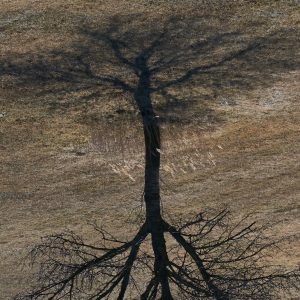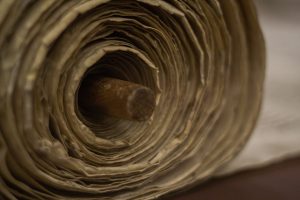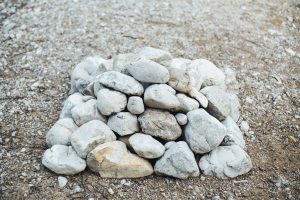persecuting zealot—turned God’s messianic servant
© desireofmysoul.faith & SoulBreaths.com. All rights reserved.
First—click this pop-up for a 1-2-3 recap of God's soul-remodeling wilderness call.
READING TIME: 9 MINUTES.
He’s the famed pharisee who some Jews and some Christians love to hate. His story—a real page-turner. His name, Saul Paulus from Tarsus.
So who exactly was this love-him-or-hate-him Saul Paulus? The guy who was privileged and free—yet caged behind bars of religious zealousness. The guy who later would be caged by man—but amazingly set free in the Spirit of God.
Let’s start here . . .
SAUL PAULUS: THE 4-1-1
- A Jew. From the tribe of Benjamin, born in Tarsus of Cilicia (estimated 10 CE), circumcised on the eighth day, of the nation of Israel, a Hebrew born of Hebrews, in regards to the law, a pharisee—per Saul Paulus in his letter Philippians 3:5 and the book giving an accounting of the first Jewish believers, Acts 22:3.
- A pharisee. Descended from pharisees, a scholar, highly intelligent, moved to Jerusalem to be a talmid (devoted student of the law)—which typically began by age 16 with deeper study to follow in early 20s until age 25 or 30, potentially putting Saul Paulus in Jerusalem for his rabbinic/pharisaical schooling somewhere shortly after 30 CE.
- Educated under the renowned Rabbi Gamaliel. Saul, as an excellent, serious student, would have gone deeper into his studies, including rabbinic interpretation and scripture memorization, possibly scroll writing, then finally, scholarly study under the famed Rabbi Gamaliel.
The Rabbi taught strictly according to the law of the patriarchs—”being zealous for God”—from approximately 22 CE to 55 CE and in the more lenient, more welcoming of converts, non-radical, nonviolent tradition of his grandfather, the great Hillel. - Yet, overzealous, persecuting—students were to become like their masters (rabbis), but Saul Paulus at times appeared more like the stricter, Jews-only traditions of Shammai (a sage opposing Hillel’s more lenient teachings) or in step with the oft blinding pride of the religious Sanhedrin.
However, after his messianic conversion, Saul Paulus became more tender, more focused on love, promoting the one-new-man convergence—Jew and Gentile becoming one in Messiah, with joint access to ADONAI, per Amos 9:11-12 and Ephesians 2:14-15, 18, 22. - Jew and Roman citizen. The Roman citizenship was purchased by his presumed “moderately wealthy” family, hence his Jewish-Roman name, Saul Paulus . . . although it wasn’t unusual for Jews to have both a Hebrew name and a Roman/Latinized one.
- A tentmaker of goat’s hair. Saul Paulus learned the trade from his father’s successful business and later on employed the trade to bear the expenses of his messianic ministry—Acts 18:3, I Thessalonians 2:9, II Thessalonians 3:8, I Corinthians 4:12, I Corinthians 9:6-18.
- Did not witness or interact with Jesus (Yeshua, Hebrew name) during the Messiah’s years of teaching/miracle works . . . the first time Saul Paulus encountered Jesus is via his Damascene experience with the resurrected/ascended Messiah, per Acts 9.
He would later write in 1 Corinthians 15:8 that he was “untimely born”—the other apostles had walked with Jesus and witnessed the miracles and all the other eternal-shifting events. He hadn’t. And he also viewed himself as the “least of the apostles” and “not fit to be called an apostle” because he “persecuted the church of God.”
But now the rest of his story.
A SOUL MATTER
Saul Paulus may have had Torah knowledge. Pedigree. Been a rising star among the pharisees.
But
his
soul
was
stuck.
Resistant.
Turned around.
Sure, his dedication to Torah/Tanakh learning was good, painstaking, exhilarating, a worthy life immersed in the things of God.
But then I recall something the Lord had said to me.
It was back in 2005 as I sat reflective on the lower part of the southern steps in Jerusalem. Herod’s southern extension of the Temple Mount where Jews, including Jesua/Yeshua and the disciples, would have ascended to reach the Temple’s entrance, particularly during Pesach, Shavuot, Sukkot.
In fact, Jesus (Yeshua) often taught on those same steps.
God’s words came to me along with a soul-penetrating vision: Jesus standing beside me on those steps, his long robe, his feet, and an impression of the disciples standing behind him. I followed his gaze, which looked passed me and outward to the city, the people.
Then I heard these words from the Lord:
“I gave them the law,
but they loved the law more than Me.”
About three years later, the Lord led me to share His words with an orthodox rabbi at a synagogue I’d attended now and then. When he’d heard those words, he sat back, silenced.
As I explained it further, he nodded, understanding and agreeing.
I’d told him that Adonai gave the law, but the law can become an idol too—anything that takes the place of God is idolatry.
Perhaps Saul Paulus had made that blurry-line transition without knowing it.
Perhaps he’d became more enthralled by the religious elements, position, and spirituality—the law itself, the halachic steps, the learning, discussions about God, debates, commentaries, Hebraic word plays, standing apart from the masses.
And perhaps without realizing it, his world-bound vessel
was more in love with and actually worshipping the stuff of the law, spiritual gifting, and heritage . . .
rather than falling in love with and worshipping . . .
God, the giver.
It’s a tricky business: Being spiritually minded, spiritually driven—yet misaligned in the soul. The swelling and swelling of knowledge . . . which can cause deeper fissures in the soul, releasing toxic, legalistic vapors.
Like manmade laws. Manmade separations. Self-driven interpretations. Performance and self-ambition waif upward, act slick, and claim center stage in the soul.
Just consider what the life of a first-century pharisee looked like:
Set apart.
Meticulously living the law.
Focused.
Unmistakably robed.
Honored by the majority.
And at philosophical odds with the Sadducee sect, who denied resurrection of the dead, destiny, and the soul’s permanence.
Despite all that—or perhaps because of it—Saul had become a dogmatist, fueled by youthful zeal. Not to mention, the heated indoctrinations of some rabbinic teachers, sadducees, and Sanhedrin members who unabashedly made defamatory comments against Jesus (Yeshua).
I say some because followers of Jesus
included pharisees, sadducees, members of the Sanhedrin,
Torah teachers, the wealthy, the poor, the middle class . . .
a multitude of Jews from every walk of first-century life.
TWO SANHEDRIN
Take a look at the religious-political stew Saul Paulus swam in—the same milieu that confronted Jesus, and later on, railroaded Saul.
The political/secular Sanhedrin during this period functioned like a supreme court—with 70 (or 71 counting the president) aristocratic members, who met in a chamber of the Temple or elsewhere.
It held varying functions per the Roman government’s restrictions, was presided over by a president (the Jewish high priest held this position), heard criminal cases, and could impose capital punishment. (1)
There was another Sanhedrin at the time—a religious council called the Great Bet Din (or Bet Din). It originated as Kenesset ha-Gedolah/the Great Synagogue during the time of Ezra and Nehemiah—who were regarded as being the highest religious authority.
It had two titled officers at the head: a Nasi (“prince,” held by the high priest, but prevented at times from presiding over the meetings) and Av Bet Din (father of the court, the director).
The Great Bet Din had 70 members (some Pharisees and/or Sadducees, depending on who held influence at the time).
Qualifications? Scholarship, modesty, popularity among their fellow men, as well as being courageous and strong.
They sat daily (not on shabbat or feast days) on the southern side of the Temple’s inner court, between morning and evening services. (1)
The Great Bet Din supervised over . . . women charged with adultery, religious-law disputes, ritual acts, Temple service, burning the Red Heifer, water-purification prep, city selection for atonement of a murdered person, harvest tithes.
No wonder these Pharisees, Sadducees, Sanhedrin had rushed to Jesus (Yeshua) with coy questions—healing on the sabbath, hand washing, fasting, the adulterous woman, paying taxes, eating the grain from the wheat fields, etc. (Matthew 12, John 8, Luke 11:38-54, Matthew 6:16-18, Luke 18:9-14.)
Yet each time, Jesus had countered them with the words of the Father . . . and with demonstrations of miraculous power and wisdom beyond their realm. Leaving them speechless. See Matthew 7:28-29.
And now, these so-called esteemed authorities were molding the mind of Saul Paulus—particularly regarding Jewish believers who were followers of the crucified (resurrected and ascended) Messiah, Jesus of Nazareth.
SAUL: ZEALOT EXTREMES
The regarded Rabbi Gamaliel had one idea of how to handle Messianic Jews . . . later on, Saul Paulus would have his own.
But one of the members of the Sanhedrin rose to his feet, a Pharisee named Gamaliel, a teacher of the Torah highly respected by all the people. He ordered the men be put outside for a little while; he then addressed the court:
“Men of Isra’el, take care what you do to these people. Some time ago, there was a rebellion under Todah, who claimed to be somebody special; and a number of men, maybe four hundred, rallied behind him. But upon his being put to death, his whole following was broken up and came to nothing. After this, Y’hudah HaG’lili led another uprising, back at the time of the enrollment for the Roman tax; and he got some people to defect to him. But he was killed, and all his followers were scattered. So in the present case, my advice to you is not to interfere with these people, but to leave them alone. For if this idea or this movement has a human origin, it will collapse. But if it is from God, you will not be able to stop them; you might even find yourselves fighting God!”
They heeded his advice. After summoning the disciples and flogging them, they commanded them not to speak in the name of Jesus [Yeshua], and let them go. The disciples left the Sanhedrin overjoyed at having been considered worthy of suffering disgrace on account of him. And not for a single day, either in the Temple court or in private homes, did they stop teaching and proclaiming the Good News that Jesus [Yeshua] is the Messiah.—Acts 5:34-42
That didn’t stop Saul Paulus.
He oversaw the stoning of Stephen—the first Messianic Jew martyred—and continued to keep his persecuting pedal to the metal.
I persecuted this Way [Messianic Jews] to the death, binding and putting both men and women into prisons, as also the high priest and all the Council of the elders can testify. From them I also received letters to the brethren, and started off for Damascus in order to bring even those who were there to Jerusalem as prisoners to be punished.—admission by Saul Paulus, Acts 22:4-5
They [Stephen’s executioners] began yelling at the top of their voices, so that they wouldn’t have to hear him [Stephen]; and with one accord, they rushed at him, threw him outside the city and began stoning him. And the witnesses laid down their coats at the feet of a young man named Saul.—Acts 7:58
SAUL: REBORN
Saul Paulus was a threat to contend with. But then God stepped in. It was deconstruction-reconstruction-of-the-soul time.
Just as we stand on the shattered tablets of Sinai and hold the second set of whole tablets in our hands, so Saul would be shattered in order to become whole.
On his way to Damascus, Saul experiences a physical and a spiritual flash of light. Not a bolt of lightning cracking the sky. It was the glory of the resurrected and risen Messiah, Jesus/Yeshua. A lightning moment that penetrated Saul’s body and soul—his physical and spiritual man—a light that physically blinds him for three days . . . and spiritually awakens him so he can finally, truly see.
The intensity of the heavenly lightning equated to the intensity of the calling on Saul’s life. He spends three days wondering where it all would lead. Three days of going from an honored, intellectual pharisee to a stilled soul before God.
Saul regains his physical sight and emerges with a radically different spiritual sight. It took years—including three years of solitary time in the desert with God and near abandonment from his fellow messianic believers—to grow through his deconstruction process before his soul was readied for its destiny. A destiny as a chosen vessel to bear the Messiah’s name “before Gentiles, kings, and the children of Israel,” per Acts 9:15.
BECOMING A SERVANT
Saul had lost everything with his conversion and soul reconstruction process. Position. Jewish community. His pharisaical robes. His honor by the majority. Indeed, he now was at odds not only with the Sadducees, but the Pharisees, unbelieving Jews, and Rome itself.
Saul, the one who once hunted . . . became the hunted.
The one previously seated with the Pharisees and Torah teachers who occupied the “seat of Moses”—per Matthew 23—was unseated from everything he thought and was.
He had a new seat at the feet of the Messiah. There, Saul surrendered everything to be deconstructed in order to be reconstructed for a humble purpose in the service of the living God.
In fact, he was ecstatic about it. In his letter to the Philippians 3:8-11, Saul writes this:
I consider everything a disadvantage in comparison with
the supreme value of knowing the Messiah Jesus [Yeshua] as my Lord. It was because of him that I gave up everything
and regard it all as garbage,
in order to gain the Messiah
and be found in union with him,
not having any righteousness of my own based on legalism,
but having that righteousness
which comes through the Messiah’s faithfulness,
the righteousness from God based on faith.
Yes, I gave it all up in order to know him, that is,
to know the power of his resurrection
and the fellowship of his sufferings
as I am being conformed to his death,
so that somehow I might arrive at being resurrected from the dead.
Read all the Soul Remodeling stories:
- Soul Remodeling: Biblical Heroes [Sarah]
- Soul Remodeling: Biblical Heroes [Joseph]
- Soul Remodeling: Biblical Heroes [Moses]
- Soul Remodeling: Biblical Heroes [Jeremiah]
- Soul Remodeling: Biblical Heroes[Saul Paulus]
I’ve had my God- designed wilderness journeys to deconstruct-reconstruct my soul. How about you? These posts can shed some light and encouragement: Soul Remodeling Series: The Wilderness Call, Part 1 and Soul Remodeling Series: The Wilderness Call, Part 2.
(1) Information on the political/secular and religious Sanhedrin is from various sources presented on the site http://www.jewishencyclopedia.com/articles/13178-sanhedrin
PHOTO CREDITS:
Tree by Martin Brechtl on Unsplash.
Torah Scroll photo by Taylor Wilcox on Unsplash.
Stone Pile photo by Markus Spiske on on Unsplash.
Man’s Arm/Light photo by Elia Pellegrini on Unsplash.
Humbled Man photo by Ben White on Unsplash.







